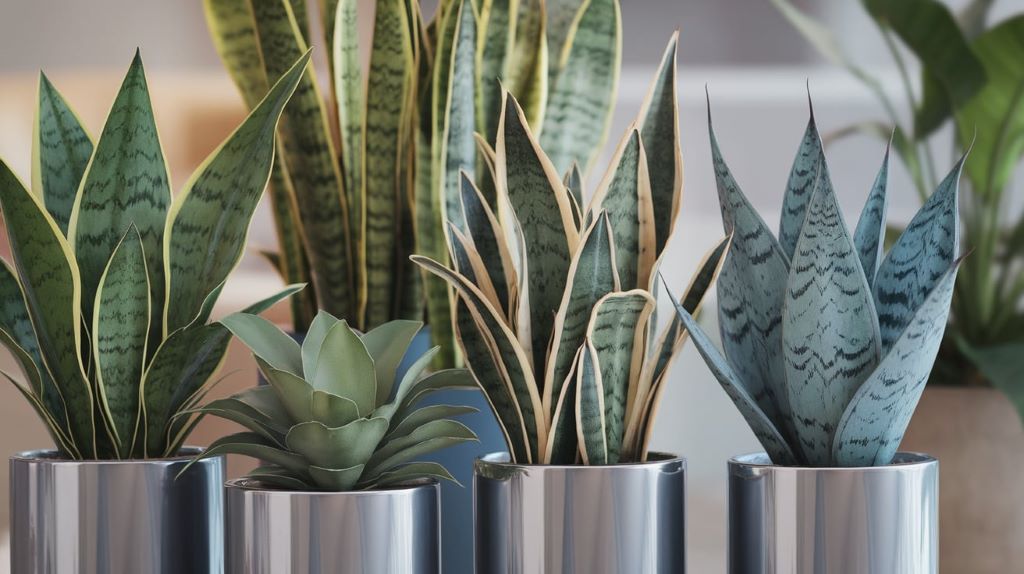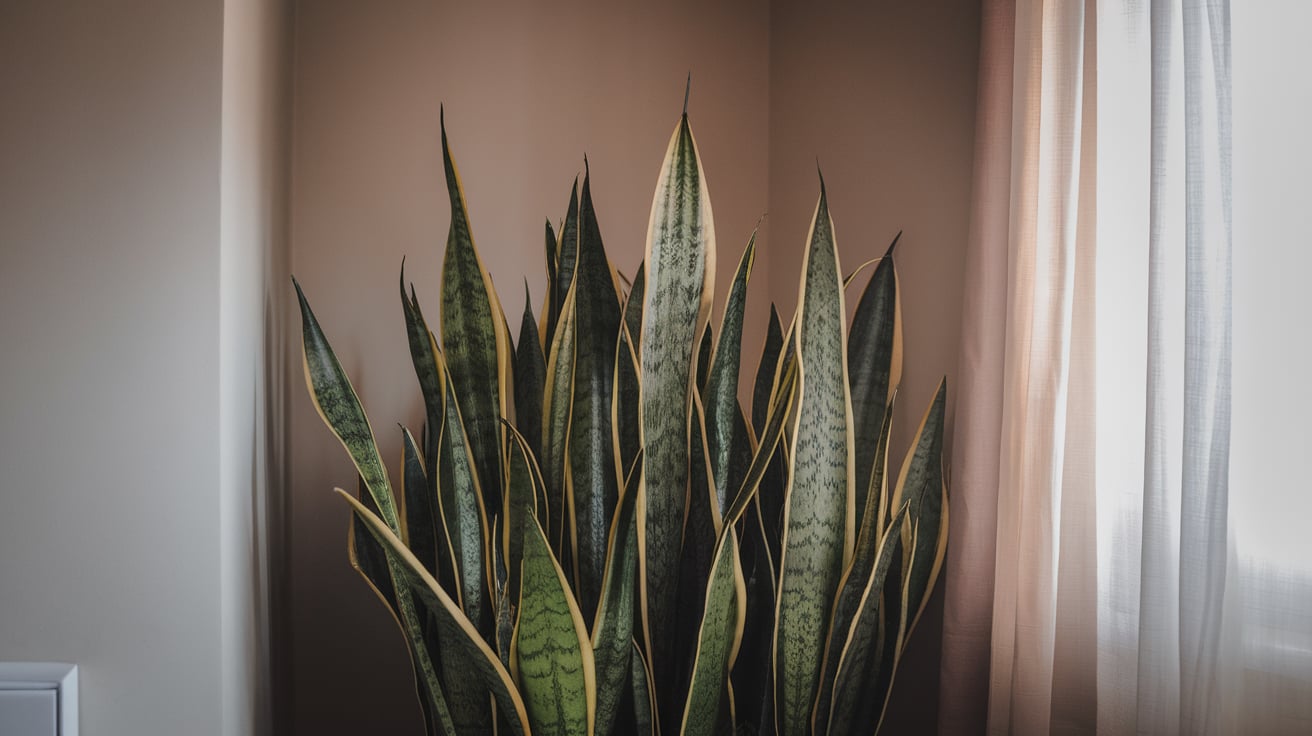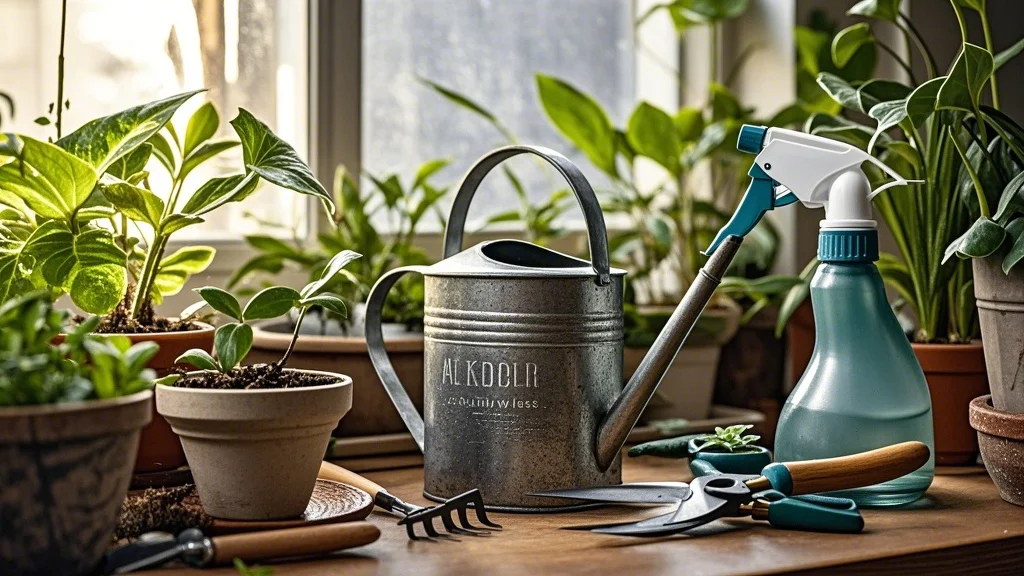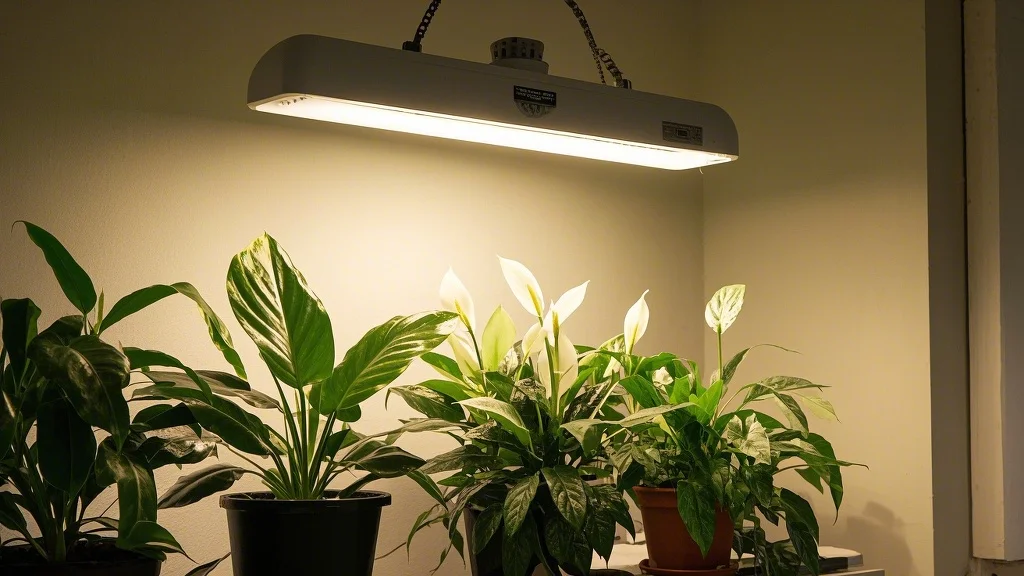For urban dwellers and office workers struggling with low light conditions, the snake plant (Sansevieria) emerges as a beacon of hope. This resilient houseplant not only survives but can thrive in the darkest corners of your space, making it an ideal choice for those seeking to add a touch of green to dimly lit areas.
Contents
Understanding Snake Plants

What are Snake Plants?
Snake plants, scientifically known as Sansevieria, are hardy succulents native to tropical West Africa. They’re characterized by their tall, upright leaves that resemble snake tongues, hence the common name. These plants are renowned for their ability to tolerate neglect and adapt to various indoor conditions, including low light environments.
Popular Snake Plant Varieties
- Sansevieria trifasciata (Mother-in-Law’s Tongue)
- Sansevieria cylindrica (Cylindrical Snake Plant)
- Sansevieria laurentii (Variegated Snake Plant)
- Sansevieria moonshine (Silver Snake Plant)
Why Snake Plants Thrive in Low Light
Snake plants have evolved to survive in challenging environments, making them exceptionally well-suited for low light conditions. Here’s why:
- Efficient Photosynthesis: Snake plants utilize the CAM (Crassulacean Acid Metabolism) photosynthesis process, allowing them to absorb and store carbon dioxide at night and convert it to energy during the day.
- Slow Growth Rate: In low light, snake plants grow slowly, conserving energy and requiring fewer resources.
- Thick, Waxy Leaves: Their leaves are designed to retain moisture, reducing the plant’s overall water needs in less-than-ideal conditions.
- Vertical Growth: The upright nature of snake plant leaves helps them maximize light exposure, even in dim settings.
Ideal Conditions for Snake Plants in Low Light
While snake plants can survive in dark corners, providing them with the best possible care will ensure they not only survive but thrive. Here are the optimal conditions for snake plants in low light environments:
Light Requirements
- Minimal Light: Snake plants can tolerate as little as 25-100 foot-candles of light, which is equivalent to the light levels found several feet away from a north-facing window.
- Artificial Light: If natural light is scarce, snake plants can benefit from artificial light sources like LED grow lights or fluorescent bulbs.
Temperature and Humidity
- Temperature: Snake plants prefer temperatures between 60-85°F (15-29°C).
- Humidity: They’re adaptable to various humidity levels but prefer moderate humidity (40-50%).
Soil and Watering
- Soil: Use well-draining potting mix designed for succulents or cacti.
- Watering: Allow the soil to dry out completely between waterings. In low light conditions, this might mean watering only once every 3-4 weeks.
Fertilization
- Feed sparingly, using a balanced, water-soluble fertilizer diluted to half strength once every 2-3 months during the growing season.
Caring for Snake Plants in Dark Corners
Placement Tips
- North-facing Windows: Place snake plants a few feet away from north-facing windows for optimal low light conditions.
- Interior Rooms: Snake plants can survive in rooms without windows, making them perfect for bathrooms or hallways.
- Office Spaces: They’re excellent choices for cubicles or desks far from natural light sources.
Watering Techniques
- Bottom Watering: This method encourages deep root growth and prevents overwatering.
- Moisture Meter: Use a moisture meter to accurately gauge when your snake plant needs water.
- Seasonal Adjustments: Reduce watering frequency during winter months when growth slows down.
Rotation and Cleaning
- Regular Rotation: Turn your plant a quarter turn every few weeks to ensure even growth.
- Dust Removal: Wipe leaves gently with a damp cloth to remove dust, allowing better light absorption.
Propagation in Low Light
Even in low light conditions, snake plants can be propagated:
- Leaf Cuttings: Cut a leaf into 3-4 inch sections and plant them in moist soil.
- Division: Separate offshoots from the main plant during repotting.
Common Issues and Solutions
Overwatering
Symptoms: Yellowing leaves, soft or mushy base, root rot
Solution: Reduce watering frequency, ensure proper drainage, and consider repotting in fresh, well-draining soil.
Underwatering
Symptoms: Wrinkled, curling leaves, brown tips
Solution: Increase watering frequency slightly, but always allow soil to dry between waterings.
Pests
Common Pests: Spider mites, mealybugs
Solution: Wipe leaves with neem oil solution or insecticidal soap. Isolate affected plants to prevent spread.
Etiolation (Stretching)
Symptoms: Leaves becoming thin and stretching towards light sources
Solution: Move the plant to a slightly brighter location or supplement with artificial light.
Enhancing Growth in Low Light Conditions
While snake plants can survive in low light, there are ways to enhance their growth and appearance:
- Artificial Lighting: Use LED grow lights to supplement natural light, especially during winter months.
- Reflective Surfaces: Place mirrors or reflective materials near your snake plant to bounce available light.
- Light-colored Walls: If possible, paint nearby walls in light colors to reflect more light onto your plant.
- Regular Cleaning: Keep leaves dust-free to maximize light absorption.
- Proper Pot Size: Use a pot that’s just slightly larger than the root ball to prevent overwatering and promote growth.
Benefits of Snake Plants in Low Light Spaces
Beyond their aesthetic appeal, snake plants offer several benefits, especially in low light environments:
- Air Purification: Snake plants are known for their air-purifying qualities, removing toxins like formaldehyde and benzene from the air.
- Oxygen Production: Unlike most plants, snake plants continue to produce oxygen at night, making them ideal for bedrooms.
- Stress Reduction: The presence of plants, even in low light areas, can reduce stress and increase productivity in office spaces.
- Humidity Control: Snake plants can help regulate indoor humidity levels, beneficial in dry office environments.

Conclusion
Snake plants are the unsung heroes of the plant world, bringing life and vitality to even the darkest corners of our homes and offices. Their ability to thrive in minimal light conditions, coupled with their low maintenance requirements, makes them the perfect choice for urban dwellers and office workers seeking to green their spaces.
By understanding the unique needs of snake plants and providing them with appropriate care, you can enjoy the beauty and benefits of these resilient plants in any low light environment. Whether you’re a seasoned plant enthusiast or a beginner looking to start your indoor garden journey, the snake plant offers a foolproof way to introduce nature into your space, no matter how dim the lighting may be.
Remember, while snake plants can survive in dark corners, they will truly thrive with a little extra care and attention. By following the tips and techniques outlined in this guide, you’ll be well on your way to cultivating healthy, vibrant snake plants that not only survive but flourish in your low light spaces.









